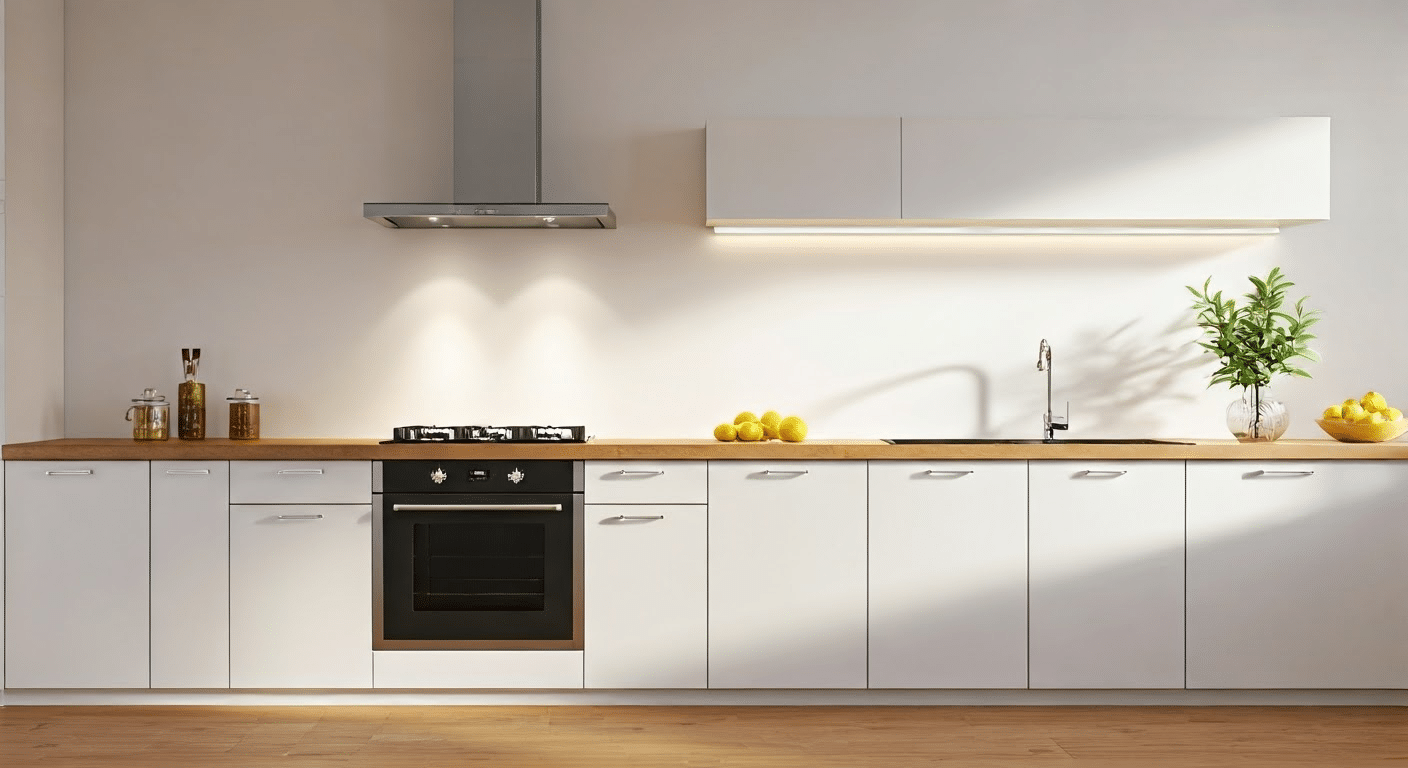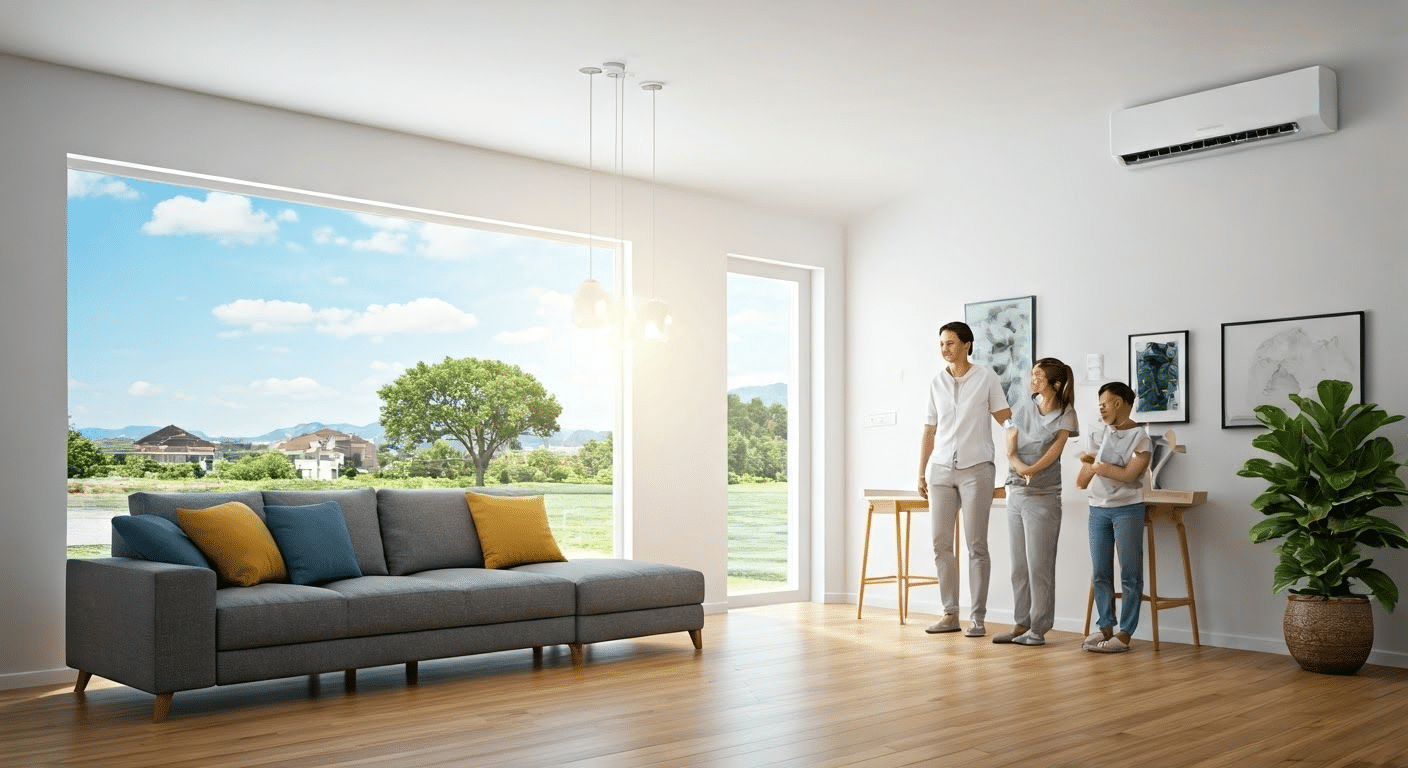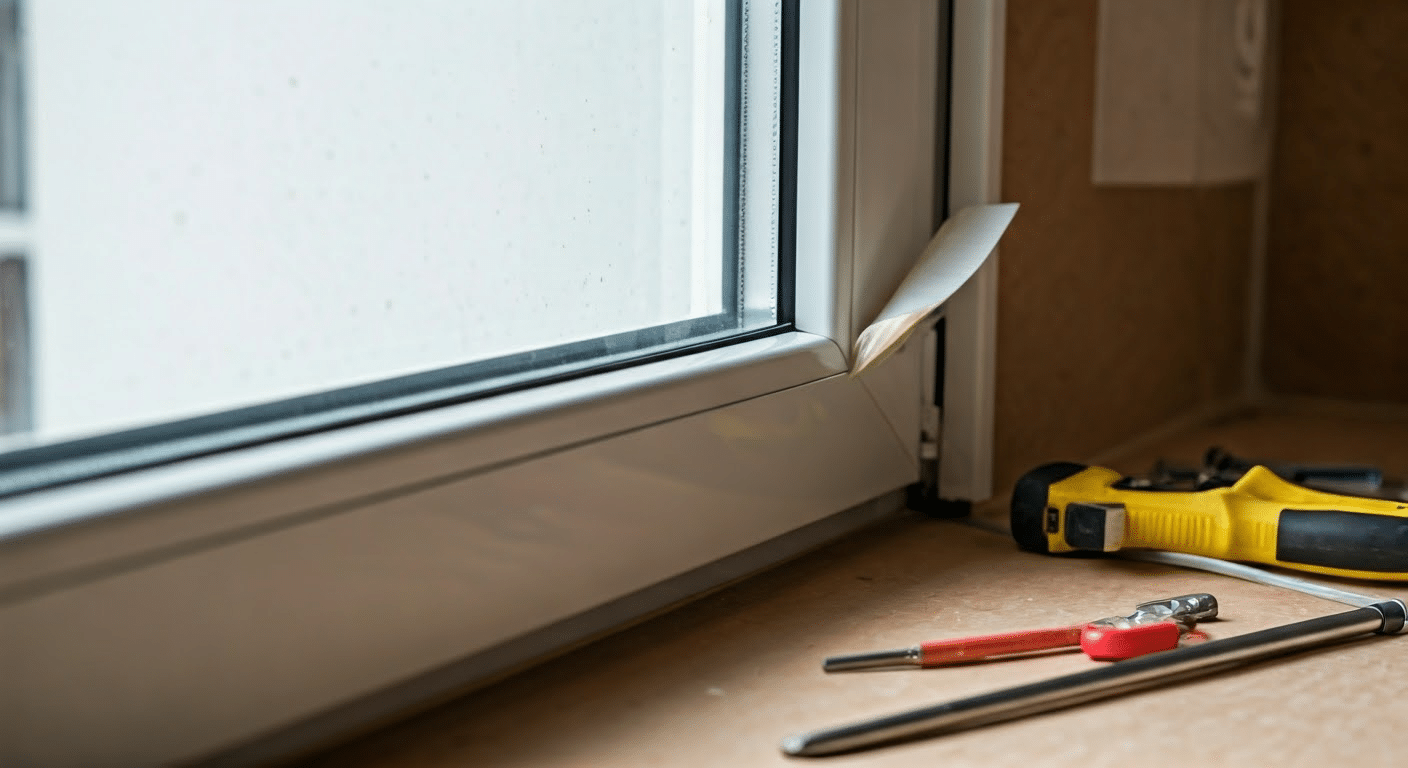10 Simple Ways to Reduce Electric Bills This Summer

Key Highlights
- Discover easy ways to improve energy efficiency and lower your electric bill during summer months.
- Learn how adjusting your air conditioner thermostat can reduce energy costs significantly.
- Explore energy-efficient upgrades like LED lighting and Energy Star appliances to save on electricity.
- Understand how sealing air leaks and using blackout curtains can combat warm air and direct sunlight.
- Find out how smart thermostats, HVAC maintenance, and ceiling fans optimise energy use in your home.
- Gain insights into electricity rates, peak hours, and simple changes to manage your utility bills effectively.
Introduction
The summer months can make it hard to keep energy costs low when you want your home cool. Many people face high electric bills in this hot time of year. But you can try some simple changes at home that will help with energy efficiency. Things like turning your thermostat up a bit or blocking direct sunlight can do a lot. When you try these easy fixes, your electric bill can go down without you losing comfort in your home. In this guide, you will get ideas that work for most residential customers. So, you can use less energy and save money every day, all summer long.
10 Effective Strategies to Cut Down Your Electric Bills This Summer

Summer months can make electricity rates and energy usage go up, causing people to worry about higher electric bills. But there are some good ways to cut down on your energy costs. For example, using ceiling fans to spread cool air or fixing air leaks in your home can make a big difference. Each small change you make helps.
The tips below show what you can do to lower energy usage and keep your home cool. They mix smart technology, simple choices in how you do things, and some energy-saving changes to your home. All of these can help you save on utility bills and stay cool, even when it is very hot outside.
1. Optimize the Use of Your Air Conditioner
Your air conditioner is often the biggest thing to use energy in the summer months. To cut down on its energy usage, set the temperature just low enough to keep cool. Most people feel good around 78 degrees Fahrenheit. Turning the thermostat down lower will not make the cool air come faster. It will only make your energy bill higher. You can set your thermostat to change the temperature when you go out or when you sleep. Every degree you raise the temperature can save you up to 10% on energy costs.
Keep up with regular checks on your air conditioner. If you change or clean out dirty air filters, the cool air will move better in your home. Dirty air filters can make your air conditioner work harder and use more power. You can also put your outdoor air conditioner in the shade. This makes it work better by as much as 10%. If you use all these steps together, you, your air conditioner, and your electric bill can stay cooler and lower all summer long.
2. Seal Windows and Doors to Prevent Air Leaks
Air leaks from windows and doors let warm air come in and let your cool air go out. You should check all the seals, look for gaps in the caulking around the window and door frames, and put weather stripping where there are issues. You need to see if there are leaks next to electrical outlets, baseboards, and vents, as they can be spots that let air slip out. Fixing these places makes your home better for keeping cool air in and also helps not waste electricity.
Use thermal curtains to stop direct sunlight from coming in during peak hours. These curtains cut down on heat in the room in a big way and can help your place stay cooler. Do a building pressurization test to spot any air leaks that are hard to find. If you take these steps, your air conditioner will not have to work as hard, which can help lower your energy costs. By sealing the air leaks, using curtains, and patching any gaps, you keep your place more comfortable and can spend less on your electric bill as it gets warmer outside.
3. Utilize Ceiling Fans to Circulate Air
Ceiling fans use less energy to cool your room. These fans give you a cool air feeling, even when the room’s temperature stays the same. They do this by pushing air around. If you make the ceiling fan go counterclockwise, it moves cool air down. This helps you feel better and keeps you from using your air conditioner as much.
Using ceiling fans with air conditioners lets you turn up the thermostat. You do not have to feel less comfortable. For example, you can raise the temperature by two degrees and the fans help. This can cut down your energy costs by up to 40%. To get the most from your fans, keep the blades clean. Clean blades help cool air move around better. When you use ceiling fans the right way, you get cool air and spend less energy.
4. Upgrade to Energy-Efficient Appliances
Energy-efficient appliances are made to use less electricity, but they still do the job well. If you want to buy something that cuts down your energy bill, look for machines with the Energy Star label. This shows the device uses less electricity when you compare it to older or standard models. If you swap out your old fridge, washing machine, or air conditioner for new ones, you can lower the energy bill. These new machines help your home be good for the earth.
Some new water heaters, dishwashers, or big air and heat systems use smart ways to be great for saving electricity. These newer models focus on energy efficiency. For instance, a fridge with thick doors does not have to work as hard to keep things cool, so you use less electricity. Small ideas help too. Try the air-dry button in your dishwasher or just run your laundry when you have full loads. Both make your house use less electricity. Getting new appliances now is a good way to keep your energy bill low. At the same time, you also help keep the planet clean for years to come.
5. Hang Blackout Curtains to Block Heat
Blackout curtains can be a good way to block heat and keep out direct sunlight. The thick material in these curtains stops most solar heat from getting into your home. This helps your house stay cooler, especially during the parts of the day when the sun is bright. Using these curtains means you do not have to run the air conditioner all the time. That will help you use less energy and lower your electric bill.
You can get thermal blackout curtains with light fronts and a white-plastic lining. Using these can cut down heat in your room by up to 33%. This will help keep the indoor temperature lower and help with energy efficiency. If you want to let natural light into the room, just open the curtains when it is not too hot outside. Close them again when the sun is at its peak. These blackout curtains also give you more privacy. When you put them in your home, you stop unwanted heat from getting in and save money on your electric bill too.
6. Adjust Your Water Heater Temperature
Your water heater’s temperature sets how much you pay for energy and keeps your home safe. If you lower the thermostat to 120 degrees Fahrenheit, you can cut the electric bill, but you will still be comfortable. Heating water uses almost 18% of your home’s energy, so when you make this change, it can help reduce utility bills in a big way.
It is good to do more than just turn down the heat. You should also keep your water heater insulated. When you wrap it in an insulation blanket, the water stays warm longer and your heater does not have to use as much energy. Every so often, drain your water heater to get rid of anything that blocks it from working well. This helps the heater be more efficient, saves gallons of water, and cuts down the number of kilowatt-hours you use. These small steps together will give you better energy efficiency and help bring down your energy costs when you see your summer electric bill.
7. Perform Regular Maintenance on HVAC Systems
HVAC systems help keep your home cool. But, if you do not take care of them, they can use a lot of energy. One good way to keep them running well is to change the air filters often. This keeps the air moving and stops clogs that can make the unit work too hard. You should change filters every month in the summer or when you need to. Be sure to use filters with a MERV rating of 11 or higher. This helps get the best results.
You need to look at your duct system and see if there are any leaks or gaps in the insulation. Ducts that are sealed well stop cool air from getting out, so your home stays cool in the best way. You should also get a pro to check your HVAC system every season. They can watch your energy usage and find any small problems before they turn into big ones. Keep grass, trash, or dirt away from outside units to avoid blocking the airflow. Good air flow makes your system use less electricity and cool your home better. When you do regular check-ups, your system gives you more cool air and you pay less on electric bills.
8. Use Smart Thermostats for Better Temperature Control
Smart thermostats are helpful tools that make energy use better. These devices change the set temperature by learning when people are home or not. For example, if you are sleeping or out, the smart thermostat will make the house warmer. This means the air conditioner does not run as much, so you save on energy costs.
You can also use your phone to change settings when you are not at home. This is handy and can save you money over time. Setting the thermostat higher than 75 degrees Fahrenheit can help you lower your electric bill. The smart thermostat also lets you see energy usage, helping you know how to use less.
Using a smart thermostat can make your home cool, your comfort better, and your energy efficiency go up. With less strain on your air conditioner, you get good savings after some time. This is a simple way to use less energy and spend less money.
9. Wash Clothes in Cold Water
Switching to cold water for laundry lowers your energy usage. This is because only about 10% of the washing machine’s electricity goes to running the machine; most of it is used for water heating. Washing clothes in cold water puts less work on your water heater, so it helps keep your clothes from shrinking or losing color.
Try to do full loads when you use your washing machine. If you do full loads, the machine will use the same amount of electricity for each load, so you stop wasting energy. You can save more if you do not use the dryer and hang your clothes on a line instead. If you follow these steps, you will cut down the energy needed for water heating. This is a good way to use less energy and keep your chores at home more green.
10. Switch to LED Lighting
LED lighting is changing the way we think about energy efficiency. ENERGY STAR-certified LED light bulbs use up to 90% less electricity compared to old incandescent bulbs. They can also last much longer. Unlike the older options, these LEDs do not send out a lot of heat and instead give focused light. This means there is less waste of energy.
When you change out all the incandescent bulbs in your entire house with LED light bulbs, you should start to see real savings on your electric bill. Adding dimmer switches to work with your LEDs can help control energy use even better. LED light bulbs keep a room bright but do not heat it up, especially in the summer months. This keeps your cooling system from working too hard. Because of this, electricity rates can go down for residential customers, giving a more sustainable lighting choice.
Additional Tips to Enhance Energy Efficiency

Making your home better when it comes to energy efficiency is about more than just the basic steps. If you add proper insulation, your house can hold on to cool air. This stops the heat from coming in and helps keep your utility bills lower. Putting up solar panels can help you save money on electricity rates over time. They make use of renewable energy from the sun. Cooking outside means your house stays cooler, and you use less energy for things like air conditioning.
Energy audits can show you just what to do to get your energy usage down. These small changes can really add up. They help lower the total amount of electricity that you use and keep that cost under control.
Insulate Your Home Properly
Insulating your home helps stop energy loss and keeps things cool in the summer months. Begin with the attic. Make sure there is good insulation so warm air does not get inside. Seal any spaces around windows and doors. Use weather stripping to keep cool air in. You can also use heavy drapes to help block the heat from direct sunlight.
Proper airflow in your home can lower energy usage and help keep your home cool. Planting trees or bushes by the west-facing walls gives you natural shade. These small changes lower your energy costs and help you live more comfortably. Insulation is a simple job, but it can really boost your energy efficiency.
Cook Outside or Use Microwave Instead of Oven
Avoid using your convection oven in the summer months. It makes your home hotter. Try grilling or barbecuing outside to help keep your house cool.
Microwave ovens are also a good choice. They use less electricity and work well to heat up or cook food. Microwaves do not make the room warm like regular ovens do. You can save energy by making meals early or late in the day, not during the hottest parts of the day. By doing this, you use less energy, lower your bills, and your air conditioner does not have to work as hard.
Understanding Your Electric Bill

Your electric bill can tell you a lot about your energy usage and the costs you have to pay. It is important to look at the charges, electricity rates, and peak hours on the bill. This will help you make better choices about how you use your power. A lot of residential customers do not pay attention to peak hours, when rates are the highest because more people are using electricity at the same time. If you move things you do that use more power to times when rates are lower, you can save some money. When you know this, you will be able to get the most out of your utility bills and spend less. You can keep your home cool and comfortable in the summer while saving at the same time.
Decoding the Charges and Rates
Electricity charges change based on how much power you use. Many times, rates go up or down depending on the amount of electricity you use. There are also fixed charges that cover things like grid maintenance and admin work. Residential customers pay these fixed fees every month, no matter how much power they use. It helps to check your monthly bill often to see your kilowatt-hour rates and to get a sense of your energy use.
Usage charges also change with the size of your household and the appliances you have. To lower the amount of electricity you use, try to turn off electronics when they’re not needed or use devices that save energy. This can help you save money. Knowing what your electricity rates are can help you take care of your utility budget better. This way, there are no big surprises in your electric bill.
Peak Hours and How to Avoid High Charges
Peak hours are times in the day when many people use power, and electricity rates go up. For residential customers, this can mean higher energy costs. This is especially true on hot days from 3 to 7 p.m. If you do laundry, run the dishwasher, or pump a pool outside of these hours, you will save money.
Set your air conditioner to 80 degrees when it is hot, and use fans to help stay cool during peak hours. Try to power on your devices later in the night or after peak times. When you use energy at off-peak times, you can lower your bills. This will also help balance the total energy usage in the area.
Technological Advancements in Energy Saving

Technology is changing the way we use energy in the home. New ideas like solar panels help you make clean energy. This can also lower your electricity bills by a lot. There are smart home devices that let you control how much energy things like the lights and appliances use. This helps them work well while using less energy. If residential customers start using these options, they can use their energy more wisely. That leaves more money for other things and helps you live in a way that is better for the earth. Let technology show you an easy way to better solutions for your home and to save on your bills.
Solar Panels and Their Impact on Electricity Costs
Solar panels use sunlight to make clean energy. This helps to lower energy costs. You get less of your power from electric companies when you use solar panels at home. They can cut your monthly bills by making your own energy. The first price to put them in may be high. But there are tax credits and help with the cost, so it is not as hard to pay at the start. Many people think this makes them a smart pick for the long run.
The panels make enough power to cut down the amount of electricity you need from the grid. This means there are lower prices for families each month. Also, if you make more energy than you use, the extra power can go to the grid. Then you can get credits for this. Solar panels are a real way to use less grid energy while you lower energy costs.
The Role of Smart Home Devices in Energy Conservation
Smart home devices help you use energy wisely. They connect to the internet and watch how you use power. Devices like smart thermostats, lights, or security sensors make changes on their own to save electricity. They do this while keeping your home comfortable.
You can also use smart plugs or meters to watch how much energy you use in real time. These tools show you which appliances use the most power. You can then make changes to save energy. Smart lighting systems with dimmer switches give you light but at lower power. Bringing these tools into your home can help lower your bills and support a more eco-friendly way of life.
Conclusion
Cutting down your electric bill in the summer does not have to be hard. You can start with the tips found in this blog. When you take steps like using your air conditioning the right way or swapping old things for more energy-friendly ones, you help your home work better and your bill get smaller. Learning what is on your electric bill and using new technology can help you even more. All the small steps you take will add up and be good for the planet. If you want something made just for you, talk to an expert for advice that fits your needs. Start now and you will see your savings go up!
Frequently Asked Questions
How much can I save by adjusting my thermostat?
If you change your thermostat by just one degree Fahrenheit, especially if it’s set higher than 75 degrees, you can save about 10-15% on your energy bill. Smart thermostats help by making these changes for you. They adjust your energy use during different parts of the day. This way, you get steady savings without having to think about it.
Are energy-efficient appliances worth the investment?
Yes! Energy-efficient appliances that have the Energy Star label use less electricity. This helps to lower your energy costs. These appliances still work well. You might find that the price is a bit higher to buy at first. But over time, you save money and that makes it a good choice. Plus, these appliances are better for the environment. So, they are a smart investment for many people.
What is the quickest change I can make to reduce my electric bill?
Switching to LED lighting is the best way to lower energy costs fast. These bulbs use up to 90% less electricity than old incandescent bulbs. If you use them with dimmer switches, you get more control over the power. This can help you see quick drops in your electric bill.

